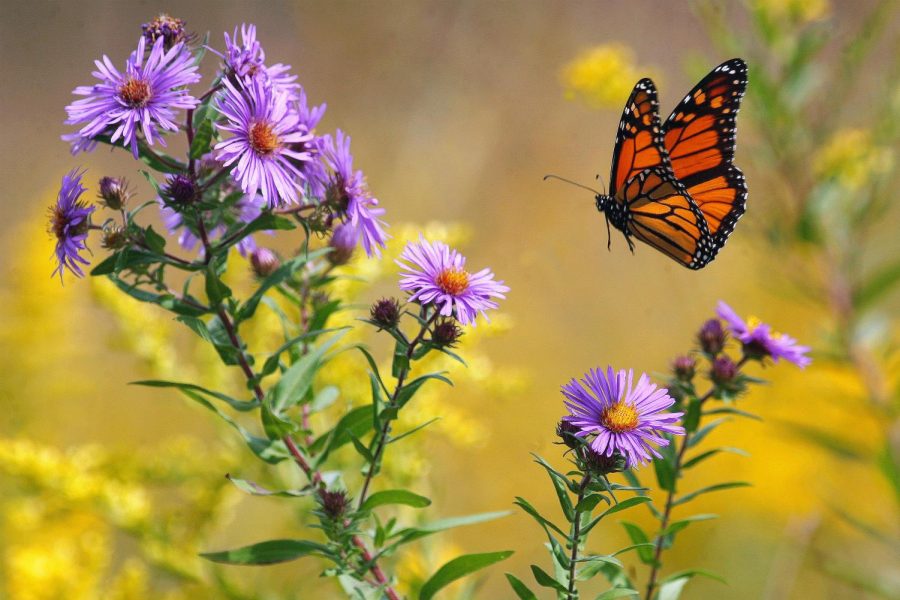I-Pollinate research initiative seeks citizen aid
Photo Courtesy of Michael Jeffords and Susan Post
Monarch butterflies can be found all around Illinois. Participants of I-Pollinate are expected to examine and observe their gardens for monarch eggs or caterpillars for at least three weeks during the summer.
Mar 28, 2019
Citizens surrounding the University are able to self-report data right in their backyards by collecting state wide pollinator data for the new I-Pollinate Research Initiative.
Pollination ecologist Alexandra Harmon-Threatt said in an email I-Pollinate is a joint research initiative between researchers at the University.
“I have been running a smaller citizen science project locally and was quite excited to extend it throughout the state,” Harmon-Threatt said.
Harmon-Threatt’s contribution to I-Pollinate focuses on how plants with a one-year life cycle, or annual plants, should be considered for conservation, specifically ornamental annuals.
“Ornamental plant species are those cultivated specifically to grow well in gardens and tend to have some visually attractive qualities,” Harmon-Threatt said.
Get The Daily Illini in your inbox!
Assisting Harmon-Threatt, plant ecologist David Zaya studies monarch butterflies and their attraction to certain nectar plants, such as milkweeds, and how it influences egg laying.
“My major goal is to understand where monarch butterflies lay their eggs, where milkweeds plantings would be most helpful and how gardens can help monarch reproduction,” Zaya said.
While searching for data in Illinois, Harmon-Threatt said there is a lot of coverage over different eco-regions, ecosystems defined by its geography, across the state.
“Illinois is a great state to work in. Because it is so long, it covers a lot of eco-regions, and we have some really engaged citizens who are eager to help out,” Harmon-Threatt said.
Zaya also thinks Illinois is a great state to work in.
“I did a study last summer that will continue this summer. I put milkweeds in citizens yards, and I found monarchs on about half. They are all over the place,” Zaya said.
Zaya said he thinks the project may last for two or more years, which he is hopeful for. However, without engagement from local citizens, the research project may end up failing.
“This project can’t work without engaged citizens,” Harmon-Threatt said. “Citizens really can make a difference by participating in science, and they certainly outnumber scientists so we need them.”
There are a few requirements eager citizens need to meet before jumping into the project. Participants are required to register a 4-by-6 foot plant bed filled with milkweeds and a variety of six out of 12 annual species. Additionally, citizens must gather data at least three weeks throughout the summer between the months of June and August.
Citizens will be asked to complete a variety of pollinator visitation surveys, including examining the annual plants for monarch eggs or caterpillars.
“This project hopes to provide some interesting information on backyards to help give people more options for planting at their homes,” Harmon-Threatt said. “We hope people throughout the state will want to be involved because data collection is easy and fun.”






